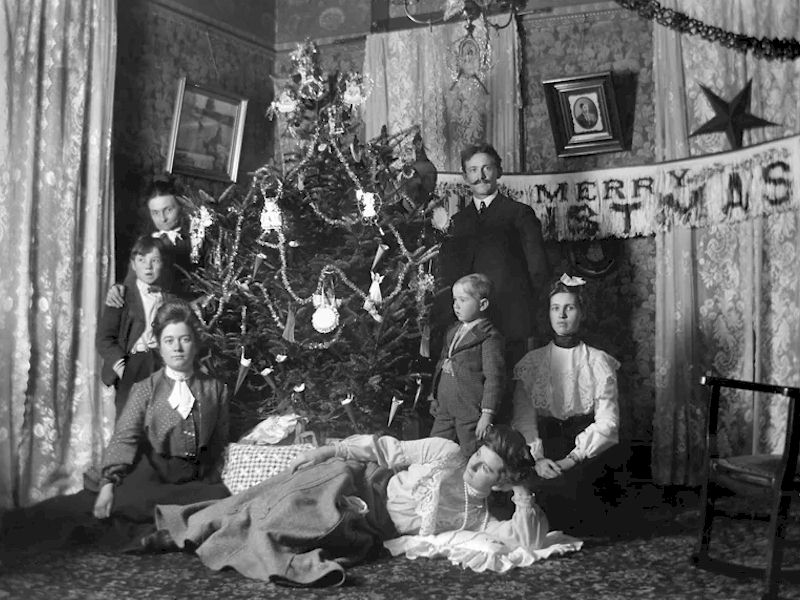
Christmas, a holiday traditionally observed on December 25 to commemorate the birth of Jesus Christ, has a rich history that spans over two millennia. In the United States, Christmas was not always a federal holiday. In fact, it wasn't until 1870 that Christmas became a national holiday in America.
Prior to 1870, Christmas was not widely celebrated in the United States. In fact, it was often viewed as a pagan holiday by the early American colonists, who were primarily Puritans. The Puritans believed that Christmas was a frivolous and unnecessary holiday, and they even banned its celebration in Massachusetts in 1659. This ban was later lifted in 1681, but Christmas still did not gain widespread popularity.
However, as European immigrants, particularly from Germany and Ireland, arrived in the United States, they brought their Christmas traditions with them. These traditions, such as decorating trees and exchanging gifts, slowly gained popularity in America.
The Road to National Holiday Status
So, what led to Christmas becoming a national holiday in America in 1870? The answer lies in the efforts of several individuals and groups who campaigned tirelessly to make Christmas a federal holiday.
One of the key players in this effort was Thomas Nast, a German-American illustrator who is often credited with creating the modern image of Santa Claus. Nast's illustrations, which appeared in Harper's Weekly and other publications, helped to popularize the idea of Christmas as a time for family, gift-giving, and celebration.
Another important figure in the campaign to make Christmas a national holiday was Clement Clarke Moore, a professor at the General Theological Seminary in New York City. In 1823, Moore wrote a poem called "A Visit from St. Nicholas," which is now known as "The Night Before Christmas." This poem, with its vivid descriptions of Santa Claus and his sleigh, helped to cement the idea of Christmas as a magical and joyful holiday.

Legislative Efforts
In 1870, a bill was introduced to Congress to make Christmas a national holiday. The bill was sponsored by Representative John Merriam of Massachusetts, who argued that Christmas was a holiday that was widely observed by Americans and should be recognized as a federal holiday.
After some debate, the bill was passed by Congress and signed into law by President Ulysses S. Grant on June 28, 1870. The law declared that Christmas would be a national holiday, to be observed on December 25 of each year.
The Impact of Christmas Becoming a National Holiday
The impact of Christmas becoming a national holiday in America was significant. It helped to cement Christmas as a widely observed holiday, and it paved the way for the development of many of the Christmas traditions that we know and love today.
One of the most significant effects of Christmas becoming a national holiday was the growth of the retail industry. As Christmas became more widely observed, businesses began to capitalize on the holiday by offering special deals and promotions. This helped to create a sense of urgency and excitement around the holiday, and it contributed to the growth of the retail industry as a whole.

A Time for Family and Celebration
In addition to its economic impact, Christmas becoming a national holiday also helped to create a sense of community and togetherness. As families and friends came together to celebrate the holiday, Christmas became a time for bonding and connection.
Today, Christmas is one of the most widely observed holidays in the United States. It is a time for family, friends, and community to come together and celebrate the values of love, kindness, and generosity.
Gallery of Christmas Images




Frequently Asked Questions
When did Christmas become a national holiday in America?
+Christmas became a national holiday in America in 1870, when a bill was passed by Congress and signed into law by President Ulysses S. Grant.
Who was instrumental in making Christmas a national holiday?
+Thomas Nast, a German-American illustrator, and Clement Clarke Moore, a professor at the General Theological Seminary in New York City, were instrumental in popularizing the idea of Christmas as a time for family, gift-giving, and celebration.
What was the impact of Christmas becoming a national holiday?
+The impact of Christmas becoming a national holiday was significant. It helped to cement Christmas as a widely observed holiday, and it paved the way for the development of many of the Christmas traditions that we know and love today.
Conclusion
In conclusion, Christmas becoming a national holiday in America in 1870 was a significant event that helped to cement the holiday's place in American culture. From its early days as a widely observed holiday to its current status as a federal holiday, Christmas has become an integral part of American life. Whether you celebrate Christmas as a time for family, friends, and community, or as a time for reflection and contemplation, it is clear that this holiday has had a profound impact on American society.










